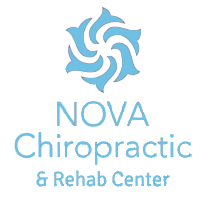
What are the Best Treatments for Lower Back Pain?
As someone who has suffered from chronic lower back pain for years, I know just how debilitating it can be. With so many treatments out there, both medical and alternative, it can be hard to know where to start. In this article, I will break down some of the best treatments for lower back pain, both traditional and unconventional, that have worked for me and others I know who also struggle with this issue. Keep reading to learn more about how to find relief for your lower back pain.
Chiropractic for Sacroiliac Pain
Lower back pain is a common condition that affects a large percentage of the population. There are several reasons why someone may experience this type of pain, including back injury, stenosis, sprain, ankylosing spondylitis, osteoarthritis, muscle spasms, and nerve root or sciatica pain. Risk factors such as age, weight, and genetics can also contribute to the development of lower back pain.
The sacroiliac joints are located in the lower back where the sacrum bone meets the iliac bones of the pelvis. When these joints become inflamed or irritated, they can cause a variety of symptoms including lower back pain, buttock pain, and even radiating pain down the legs.
Sacroiliac joint pain can be caused by a variety of factors including injury, arthritis, pregnancy, or even poor posture. It can be difficult to diagnose as the symptoms can mimic other types of back pain and may be confused with hip or sciatic nerve pain. However, there are certain tell-tale signs such as tenderness to the touch over the joint, pain with certain movements such as standing or sitting for prolonged periods, and pain that is relieved by lying down or switching positions.
The good news is, there are treatments available for sacroiliac joint pain. These can include physical therapy to strengthen the muscles around the joint, chiropractic adjustments to realign the joint, and in some cases, injections to reduce inflammation. If you are experiencing any type of back pain, it is important to seek the advice of a medical professional to get an accurate diagnosis and treatment plan. Don’t suffer in silence – with the right care, you can find relief from sacroiliac joint pain and get back to living your life to the fullest.
An often overlooked problem is IAC pain, which stands for ilioinguinal, iliohypogastric and genitofemoral nerve pain. This type of pain can be incredibly debilitating, impacting everything from simple daily activities to work and relationships.
IAC pain typically affects the lower part of the abdomen, groin and upper thigh, and can occur for a variety of reasons. It may be due to a hernia surgery, nerve damage, or as a result of trauma or other medical conditions. Regardless of the cause, IAC pain can be difficult to diagnose and manage.
Fortunately, there are a variety of non-surgical treatment options that can help manage IAC pain. These may include medications such as anti-inflammatories or nerve stabilizers, Chiropractic, physical therapy, TENS units, and nerve blocks. Additionally, lifestyle adjustments like rest, exercise, and stress reduction may also alleviate symptoms. It’s important to talk to a healthcare provider to determine the best course of action for your specific case.
Chiropractic, Physical therapy, and exercise programs can help to strengthen the lumbar spine, alleviate muscle spasms, and improve blood flow to the affected area. Home remedies such as heat therapy with a heating pad or cold therapy with an ice pack can also provide temporary pain relief. In more severe cases, steroid injections or radiofrequency ablation may be recommended by a neurosurgeon.
Another effective and increasingly popular treatment option for sacroiliac pain is chiropractic care. Chiropractors use hands-on techniques such as spinal manipulation to relieve pain signal interference, reduce muscle tension and inflammation, and restore proper spinal alignment. Chiropractors may also use other techniques such as massage, stretches, and exercises to improve mobility and range of motion. In particular, chiropractic care is effective for sacroiliac pain, a common cause of lower back pain.
In conclusion, there are numerous treatment options available for lower back pain caused by the sacroiliac joint. It is important to consult a healthcare professional to determine the appropriate course of action for your specific condition. Depending on the underlying cause and severity of your pain, a combination of Chiropractic care, prescription medication, physical therapy or exercise program, home remedies, or dry needling may be recommended.
Chiropractic for Facet Pain
One of the most common conditions that I have encountered is Facet Joint Syndrome. This syndrome is caused due to the wear and tear of the facet joints that are present in the spine. The facet joints are the connecting links between the vertebrae in the spine, which are responsible for providing stability and support to the spine. As a result of Facet Joint Syndrome, individuals tend to experience chronic back pain, muscle spasms, and stiffness, which can often lead to a decrease in their quality of life.
Chiropractic care can help alleviate the symptoms of Facet Joint Syndrome. Chiropractic care is focused on the non-surgical treatment of musculoskeletal disorders, such as Facet Joint Syndrome. Chiropractors use various manual adjustment techniques to realign the spine and restore joint mobility, which can help decrease pain and discomfort.
Furthermore, chiropractic care not only focuses on the treatment of the symptoms but also on the prevention of further damage. By identifying the root cause of the problem, chiropractors can provide customized treatment plans that can include tailored exercises and lifestyle modifications to strengthen the spine and improve overall spinal health. In conclusion, if you are suffering from Facet Joint Syndrome, chiropractic care can be a safe and effective treatment option that can help you break free from chronic pain and get back to your active lifestyle.
There are also alternative forms of treatment, including chiropractic care. Many individuals have seen improvement in their lower back pain through chiropractic adjustments, which can reduce pain signals and muscle spasms. Additionally, nerve root irritation or sacroiliac pain can be addressed through chiropractic manipulation. While these treatments may not be suitable for everyone, they can be a useful complement to traditional medical care for individuals dealing with chronic lower back pain.
Chiropractic for Herniated Discs
Being a common ailment that affects many people at some point in their lives, it is no surprise that finding the right treatment option can be challenging. One treatment option that has gained popularity over the years is chiropractic care, especially for herniated discs.
Chiropractic is a form of alternative medicine that focuses on the diagnosis and treatment of musculoskeletal disorders, including lower back pain. Chiropractors use a variety of techniques such as spinal adjustments, manipulation, and mobilization to relieve pain, reduce inflammation, and improve blood flow to the affected area. Chiropractic care may also include exercises, stretches, and lifestyle modifications designed to help patients manage their pain and improve their overall quality of life.
For individuals with a herniated disc, chiropractic care may be a viable treatment option. A herniated disc occurs when the soft tissue inside the disc pushes through the outer layer, causing irritation to a nearby nerve root. This can lead to pain signals, numbness, and even sciatica. Chiropractors can help alleviate these symptoms by manipulating the lumbar spine, which can relieve pressure on the affected nerve root. This can result in pain relief, improved mobility, and a faster healing process.
While chiropractic care may not be suitable for everyone, it is generally considered a safe and effective treatment option with few side effects. In contrast to prescription medication or surgery, chiropractic care does not require the use of drugs or invasive procedures. Instead, it involves natural healing methods that work with the body’s own ability to heal itself. As with any treatment modality, it is important to speak with your healthcare provider to determine if chiropractic care is right for you.
Chiropractic for Maigne’s syndrome
Another of the most common reasons for lower back pain is Maigne’s syndrome, which stems from compression of nerve roots in the lumbar spine. There are various treatment options available, but in my opinion, chiropractic care is one of the most effective ways to achieve long-lasting relief.
Maigne’s syndrome is a low back problem that affects the area of the spine which connects the lower back to the middle back, causing pain in the back, SI joints, groing, abdominal region, pubic bones, and sacrum.
Maigne’s syndrome is often caused by instability or degeneration of the lower thoracic vertebra that can then radiate down to the lower back and pelvic area. Chiropractic care involves the manipulation of the spine to realign and reduce nerve irritability. This helps to improve the blood flow to the affected area and reduce muscle spasms. Chiropractic care is a drug-free alternative to treating pain and has fewer side effects than medications like NSAIDs, Tylenol, and muscle relaxers. Physical therapy and exercise programs can also be incorporated to aid in the healing process.
While medications like ibuprofen, acetaminophen, and naproxen may provide short-term relief, they are not effective in addressing the root cause of the pain. In certain cases, prescription medication and steroid injections may be necessary, but with their potential side effects, it is best to explore alternative treatment options first.
Studies have shown that chiropractic care is an effective treatment option for lower back pain, sciatica, and even conditions like ankylosing spondylitis and stenosis. By alleviating nerve irritation, chiropractic care can reduce the pain signal and provide long-term pain relief. In my opinion, chiropractic care should be considered among the best treatment options for lower back pain, especially for Maigne’s syndrome.
Chiropractic for Back Strain
Back pain is a common problem, especially when it comes to lower back pain. It can be caused by many different factors, including back injury from car accidents, muscle spasm, sprain, nerve root compression, and osteoarthritis. Chronic back pain can also result from ankylosing spondylitis and stenosis. There are several treatment options for lower back pain, including prescription medication such as nonsteroidal anti-inflammatory drugs (NSAIDs), acetaminophen, and muscle relaxers. However, these drugs often come with side effects such as stomach upset, dizziness and increased risk of stroke. Pain medication such as ibuprofen, naproxen and Tylenol can help relieve lower back pain. Physical therapy, bed rest, heating pads, ice packs, exercise programs and home remedies like yoga and massage therapy are other treatment options.
However, in my research, I’ve found that chiropractic care is one of the most effective treatment options for lower back pain. Chiropractic treatment aims to restore the proper alignment of the vertebrae and the muscles surrounding the lumbar spine, promoting blood flow and aiding the body’s natural healing process. Additionally, chiropractors may also suggest exercises, stretches and lifestyle changes to help alleviate pain and promote healing. While chiropractic care cannot treat conditions such as breast cancer or infection, it has proven effective in treating many lower back pain conditions, including muscle spasms, nerve pain and sacroiliac joint dysfunction. Furthermore, more advanced treatment options such as steroid injections and radiofrequency ablation are also available from a neurosurgeon, but chiropractic care seems to be a better option to try first in order to avoid the potential complications from these invasive procedures.
Overall, understanding the different treatment options for lower back pain can greatly improve one’s quality of life. Proper diagnosis and a combination of therapies, such as chiropractic, medication, physical therapy, and lifestyle changes, can effectively manage pain and prevent future injury. Additionally, seeking the advice of a healthcare professional and staying active can help alleviate symptoms and promote overall wellness. Altogether, taking a comprehensive approach to treating lower back pain is crucial for maintaining a healthy and pain-free lifestyle.
